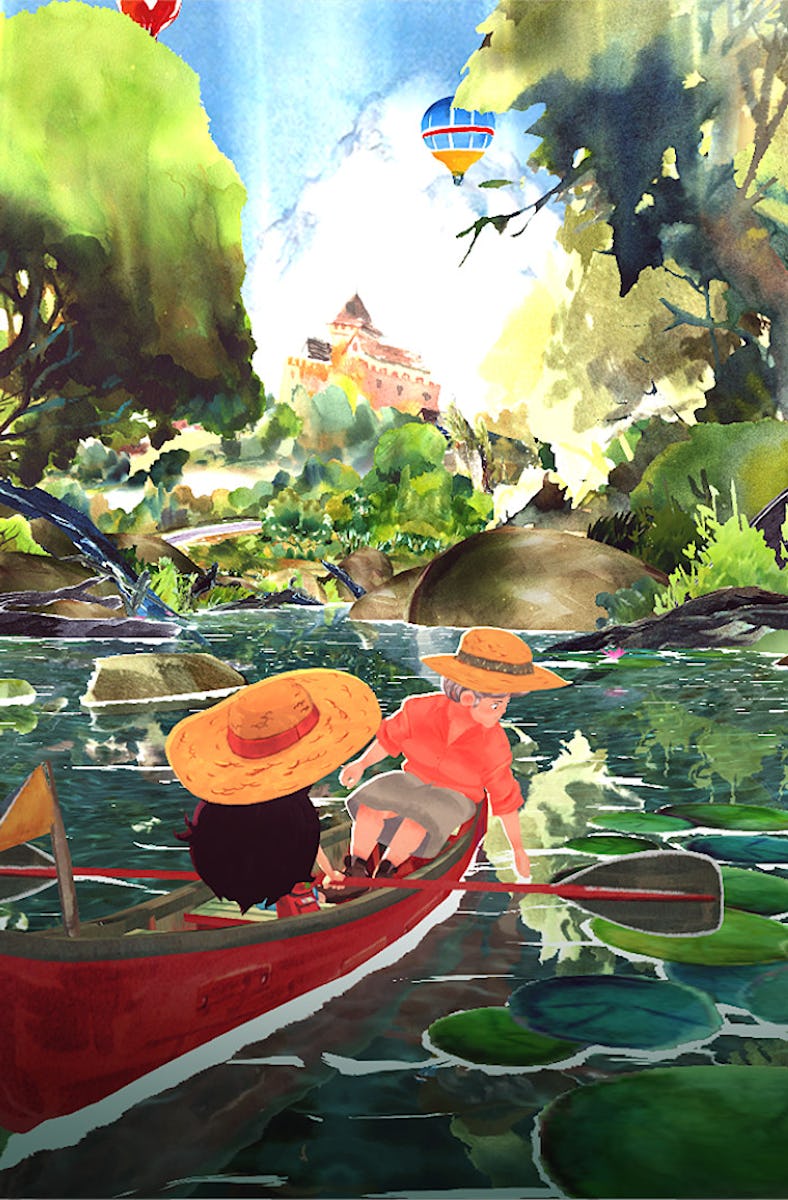You Need To Play the Most Visually Stunning Game of 2023 ASAP
Paint by numbers.

We’re just over halfway into 2023, and we’ve already gotten an astoundingly long list of incredible new AAA and indie video games. But one new adventure game offers something unique: a watercolor aesthetic that makes it the most gorgeous title of the year so far. This one-of-a-kind art direction is backed up by a short and sweet (but also deeply heartfelt) story of memory and relationships.
From French developer UN JE NE SAIS QUOI, Dordogne follows protagonist Mimi as she returns to her grandmother’s abandoned house in the French countryside in hopes of rekindling some of the memories she lost many summers ago. Over the course of four hours, the narrative unfolds with a mix of vignettes set in both past and present.
Dordogne is a visually stunning game. The hand-painted French countryside is vibrant and alive, with animated brushstrokes filling out scenes as you walk through the world. Equally impressive are the 3D animated characters who manage to emulate that water-color aesthetic seamlessly. But while plenty of games are pretty to look at, Dordogne surprises the player at every turn with impressive landscapes that never once lose their splendor in the game’s brisk runtime.
Dordogne is more than just a pretty face, though. At its heart is Mimi’s journey to cure the selective amnesia that stems from a summer she spent in the Dordogne region of France with her grandma. This occurs mechanically through exploration of the old estate and the surrounding wilderness and town. An old journal that Mimi and her grandmother collected memories in occasionally helps the protagonist relieve some of that summer, which the player is then able to explore as a younger Mimi.
This obsession with memory extends to the archival-like task the game gives you of recording this trip in your journal through photographs, audio tapes, stickers, and poems. The summer, just like memories, is fleeting and you have to choose what moments to capture, whether it be the beautiful air balloons floating over the town or a quiet moment in the garden with your grandmother.
All these different elements (art, story, game mechanics) come together when Mimi is tasked with repairing a kayak, which leads to a cruise down the river that runs through town. But throughout the game, exciting set pieces encourage you to fully take in the beauty of Dordogne while also remembering to capture it in your journal.
The player chooses what to record from Mimi’s summer in the countryside.
While the journaling here is much more limited than other games like Season: A Letter to the Future (which also concerns itself with themes of memory) the result is much the same. The player is forced to take stock of what they have experienced and make some kind of emotional judgment on what is important enough to be preserved. While Season is more concerned with a macro concept of memory, Dordogne investigates the importance of personal memory as the keeper of important relationships in our lives.
Throughout Dordogne’s story, we learn that Mimi’s family has never been happy. As an adult, she has a poor relationship with her father, who had his own troubled relationship with his parents. Mimi also shuts out her grandmother despite once being close. Flashbacks show how she came to see her grandmother as a complex person, neither a villain nor a hero in totality. Their summer together had both good and bad moments before falling apart due to an event revealed in the game’s climax.
While that final reveal doesn’t land perfectly, Dordogne still succeeds thanks to its gorgeous art style and some truly beautiful moments. Just like Mimi’s memories of her fateful summer, Dordogne succeeds when choosing to remember the good moments despite the bad.